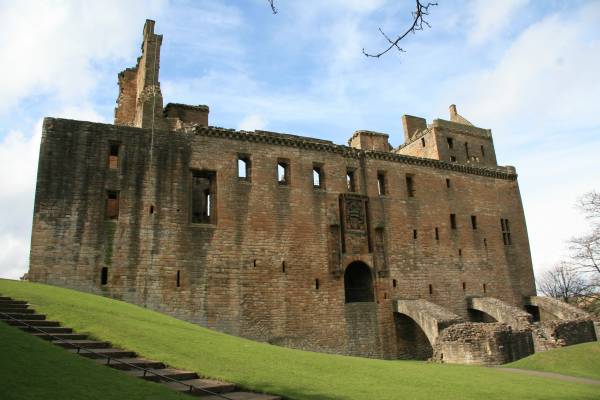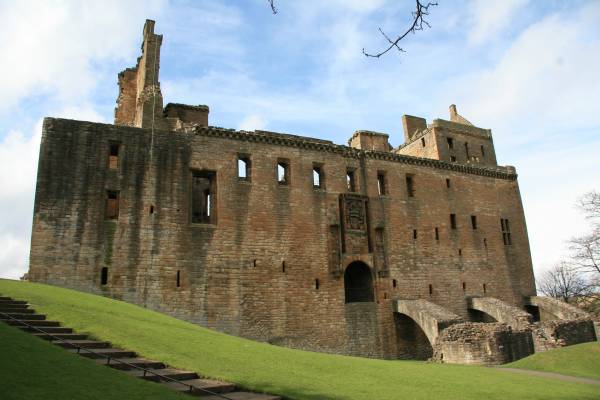
A guide to Linlithgow Palace

It was the birthplace of Mary Queen of Scots, the favoured home of Stewart kings and became known as a ‘pleasure palace’ for royals breaking up the journey between Stirling Castle and Edinburgh Castle. Today, Linlithgow Palace remains a testament to Renaissance design and is a Site of Special Scientific Interest due to the incredible wildlife found in the loch and surrounding countryside.
If you fancy a day trip within easy reach of the Scottish capital, Linlithgow Palace can be found just 20 miles west of Edinburgh. Here are just a few reasons to visit this stunning residence.
Although not fully intact today, Linlithgow Palace remains an impressive feat of architecture. Built over 200 years, it was badly damaged by a fire in the 19th century, which led to some of the original structure being torn down. After an attack by the English in 1424 that saw most of the town of Linlithgow burnt to the ground, King James I instructed that a building project should be undertaken to create a castle worthy of royalty. Work continued under James III, IV, V and VI until 1624. The palace was last occupied by Bonnie Prince Charlie in 1745 before the Duke of Cumberland’s troops set the palace on fire in February 1746.
Despite the damage, there are still many signs of the attention to detail and great expense poured into the castle over two centuries of construction work. The oriel windows of the royal bedchambers, the impressive archways and high towers overlooking the loch make it a truly awe-inspiring sight.
The ornate fountain built by James V in 1538 is an absolute must for all visitors and is the Palace’s pride and joy. Standing tall in the palace courtyard at over 16 foot high the fountain was built to reflect the power of the king. Water falls from the crown to the tiered bowls below to suggest the king’s strength and kindness. The fountain is intricately carved with mythical beasts and human heads. A peasant or ‘gaberlunzie’ depicted in the stone’s carvings is even thought to represent James V in disguise.
In 2007, the fountain was restored to its former glory by Historic Scotland and every year throughout July and August you can still see the fountain flow on weekends. The reason for such strict limitations on the fountain’s usage is so that its condition does not deteriorate as the years go by.
On a pleasant day, there are few finer grounds to walk around, with the loch and lush green fields making it a location worthy of a picture postcard. For those keen to learn more about the wildlife and geography of Linlithgow, a Ranger Service runs guided walks, group tours and several visitor events over the course of the year.
Every year the palace sees the return of the atmospheric jousting event to remember the medieval tournaments that played out on Linlithgow Peel.
Given the beauty of its location, it is no surprise that Linlithgow Palce has been used as a film set on occasion. The site was recently utilised as a set location on the television adaptation of the Outlander novels written by American writer Dian Gabaldon.
Fright Night
If you are the kind of person who loves the idea of a scary night out ahead of Halloween, make sure you visit the palace on Friday’s Fright Night. The tour takes you back to the year 1850s. Join Professor Newcomen and his sidekick Seamus as they investigate rumours of paranormal happenings.
Are you ready to make the move to Edinburgh’s most desirable new district? Why not book an appointment to view Quartermile today on 0845 000 2525.


